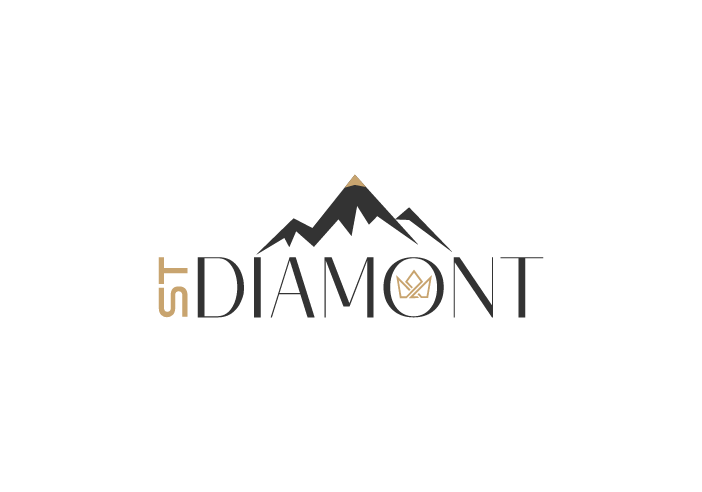

Diamond Cut
Learn about diamond cuts, which determine a diamond’s beauty, sparkle, fire and brilliance.
Why Is A Diamond’s Cut Important?
Diamond cut is one of the most important factors to consider when buying a diamond. The cut of a diamond is the balance of proportion, symmetry, and polish achieved by the diamond cutter. The extent to which the diamond is cut is directly proportional to the diamond’s overall beauty. The better a diamond is cut, the lighter it can reflect and refract. Modern diamond cutters understand how light moves through diamonds and have developed a set of specific proportions and angles to best optimise the diamond’s inner brilliance.
Natural diamonds look like two square pyramids arranged in an eight-sided octahedral before they are worked. A point-cut diamond is still in its natural shape and polish. While still quite lovely, this cut does little to maximise the effects of light moving through the stone.
Table, width, and depth are three proportion factors that have a direct impact on a diamond’s ability to reflect light correctly. The table size and depth of a diamond in relation to its diameter have a significant impact on its light return. Simultaneously, the proper width ensures that light strikes the critical refraction angle.
A well-cut diamond is proportioned so that the majority of light entering the gem exits through the top of the stone, perfectly balancing white light (brilliance) with intense flashes of colourful fire (dispersion).
A diamond cut even a few degrees out of proportion, on the other hand, can tunnel light out of the bottom of the diamond rather than redirecting it back up to the table, a phenomenon known as light leakage. This leak results in a diamond with poor light performance, dulled brilliance, and a dark centre that hides the diamond’s natural sparkle.
What Diamond Characteristics Impact Cut?
Several proportion factors of a diamond have an immediate impact on the diamond’s ability to reflect light. The table size and depth of a diamond relative to the diameter dramatically impact the light return from a diamond.
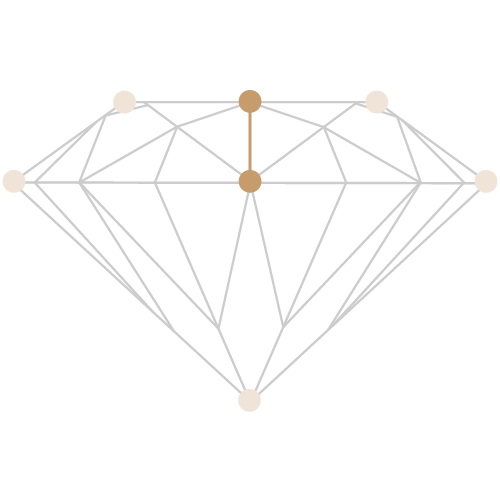

How Are Diamond Cuts Graded?
The Gemology Institute of America, or GIA, has described seven components determining a diamond’s cut grade after 15 years of studying how light interacts with a round brilliant cut diamond. Brightness, dispersion, scintillation, weight ratio, durability, polish, and symmetry are the components.
When grading a diamond, each factor is assigned a letter grade: Excellent, Very Good, Good, Fair, or Poor. The lowest assessment in any category is used to determine the final grade. For example, if a diamond’s lowest score in durability is “Fair,” despite ranking “Very Good” in all other components, the final grade is “Fair.”
This rule exempts symmetry and polish, so a diamond with a “Very Good” polish can still be classified as “Super Ideal.” On the Brilliant Earth website, diamonds rated “Excellent” by the GIA will fall under Ideal or Super Ideal.
Brilliant Earth differentiates between Ideal and Super Ideal diamonds by using the GIA grading scale and specific diamond characteristics such as polish and symmetry. When a cut grade is not available from a grading laboratory, such as with fancy-shaped diamonds, Brilliant Earth combines the above characteristics with depth, table, secondary measurements, and subjective factors to evaluate the difference in diamond cuts.
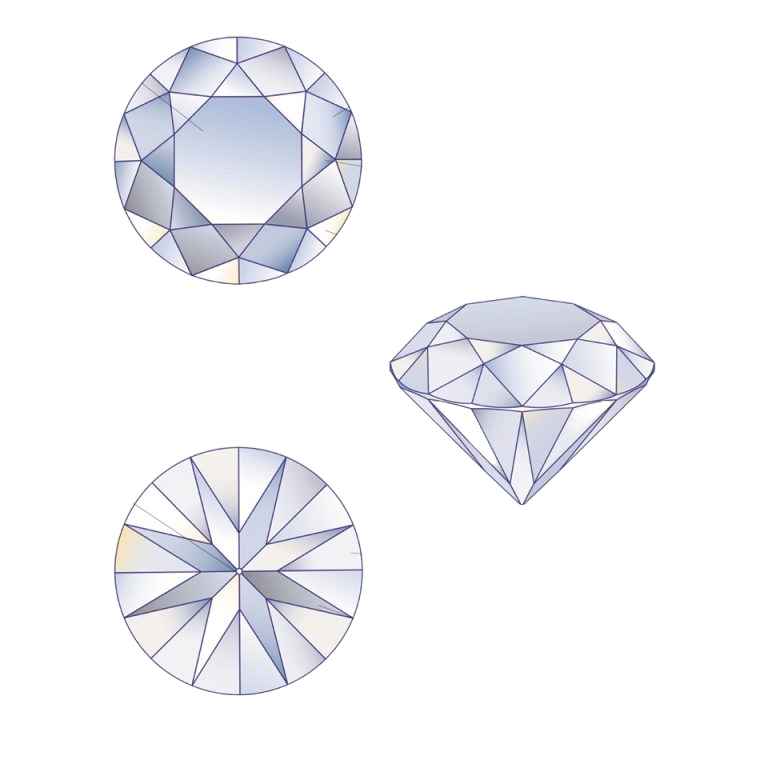

How Are Diamond Cuts Graded?
Super Ideal Diamond Cut
Only gems with the most desirable dimensions and proportions that ignite the brilliance, dispersion, and scintillation within are included in the Super Ideal diamond cut. This grade showed excellent craftsmanship and class excellence.
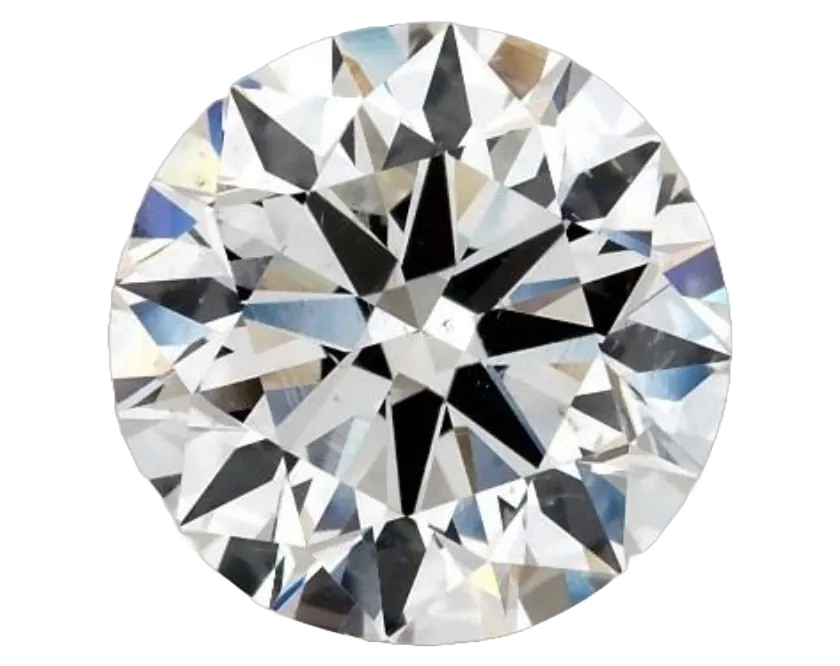

Ideal Diamond Cut
To the untrained eye, an Ideal diamond appears to be just as brilliant and fiery as a Super Ideal diamond. Ideal diamonds may have a lower clarity or colour grade, but this is most likely due to a small amount of light leakage. Because it is visually identical to Super Ideal diamonds, it is a popular choice for engagement rings.
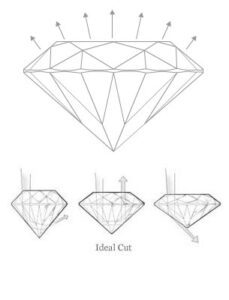

Very Good Diamond Cut
A Very Good cut diamond will still exhibit incredible light return and exceptional brilliance because the majority of the light entering the table will refract as expected. A Very Good cut diamond frequently has proportions that either offset the appropriate weight-to-size ratio or undermine the facet balance. This is a popular diamond cut because it reflects nearly the same amount of light for a much lower price.
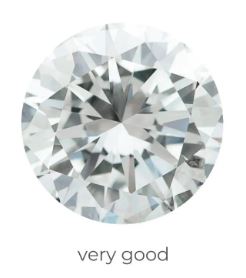

Good Diamond Cut
Diamonds with a good cut are ideal for larger carats because they leave weight while still reflecting a lot of light. A diamond of this grade will have slightly imperfect proportions, allowing it to reflect the majority of light. Because the ratios leave more dark spaces in the stone, good diamonds will appear duller than a comparable gem of a higher grade.
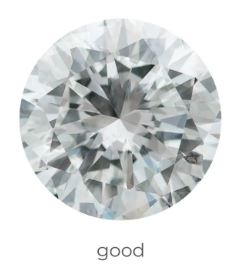

Poor Diamond Cut
A poor diamond cut allows the majority of light to escape through the pavilion and culet. When viewed from the top, there are noticeable areas of darkness where the facets are unable to refract or reflect light towards the table. Poor cut diamonds are not available at Brilliant Earth.
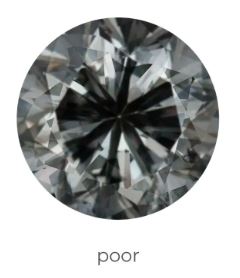



How Diamond Cuts Affect Price
Because the cut is the most important determining factor in a diamond’s overall beauty, a higher grade will come with a higher price tag.
A beautiful cut can often compensate for flaws in clarity, colour, and carat. Masterfully crafted facets create incredible light displays that hide inclusions and make the diamond appear larger than it is.
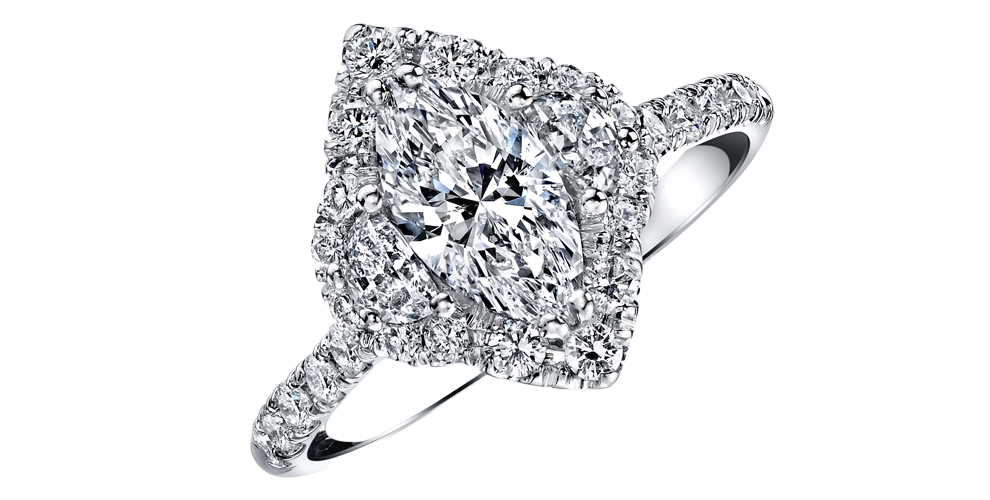

How Diamond Cuts Affect Sparkle
A diamond’s character is defined by its sparkle, or the contrast between white light and the dispersed coloured light within the gem. The wow factor draws attention from across the room, creating a dazzling display as the seemingly endless facets dance of light within the diamond.
When cutting a stone, careful consideration must be given to the complex interactions between the table, the angle of the crown, the depth of the pavilion, and the total depth. Flashes of reds, blues, oranges, greens, and yellows enhance the gleaming, white brilliance when properly calculated, with appropriate angles and well-defined proportions.
